Here’s a riddle for you: when does 2 plus 2 not equal 4?
Apparently, in group work.
Although work can indeed be done faster when you work collaboratively with others, a phenomenon called social loafing can hinder group progress.
If it doesn’t sound familiar, don’t worry — although its name might not be recognizable, you’ve definitely experienced social loafing first-hand at least once in your life.
Have you ever found yourself feeling resentful because your teammates aren’t contributing as much as you are?
Yes? Then, congrats — you’ve experienced the consequences of social loafing!
If you want to find out more about this phenomenon, then keep reading — we’re diving deep into the topic of social loafing and answering the following questions:
- What is social loafing?
- What are examples of social loafing?
- What causes social loafing?
- How does social loafing affect the workplace?
- How can managers and employees reduce social loafing in the workplace?
Let’s get started!
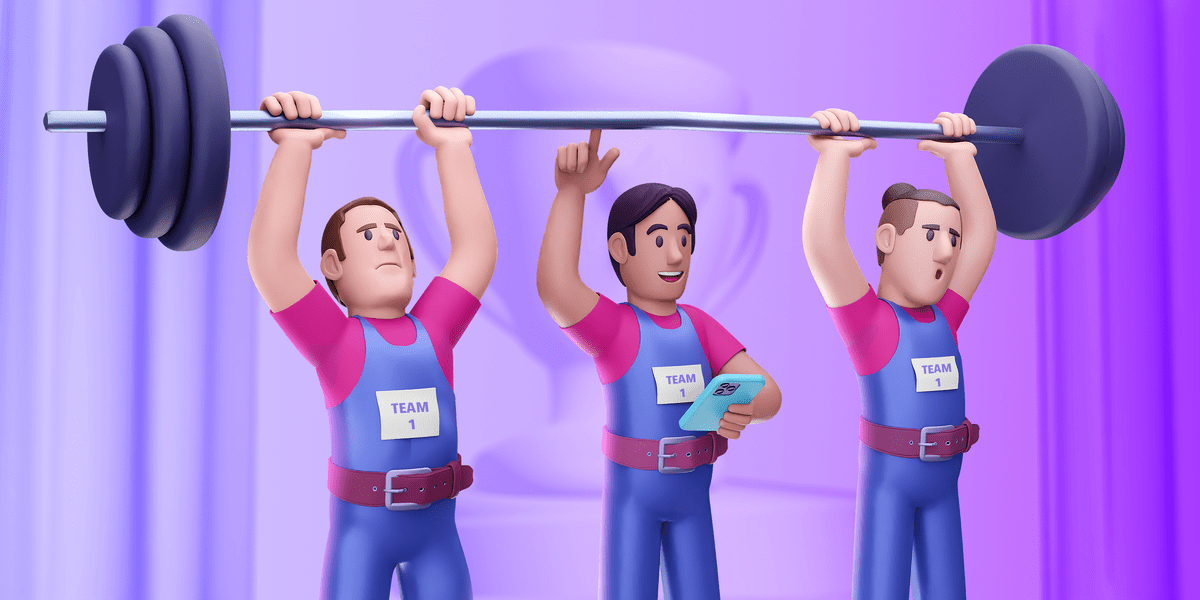
- Social loafing is a phenomenon where people don’t put in as much effort when working in a group as they would during individual work.
- Social loafing in the workplace can be a real problem for teams, as it affects productivity, team dynamic, and team communication.
- There are 8 different causes of social loafing – group size, lack of clarity, lack of accountability, diffusion of responsibility, perception of inequity, reduced motivation, expectations of other people’s performance, and cultural differences.
- Both managers and employees can help prevent social loafing — managers by establishing small groups where they evaluate everyone’s work individually and try to motivate and reward their employees, and employees by increasing their motivation and engagement and taking ownership for their work, among other things.
Table of Contents
What is social loafing?
Social loafing is a social phenomenon where people don’t display the same amount of motivation or effort in group or collaborative work as they would during individual work.
The main difference between individual and group work — at least when it comes to social loafing — is in the way the end results are judged.
When people know they’re being reviewed as a part of the group, they may feel a tendency to slack off and put in less effort than they would if they were the only person being assessed.
Although social loafing might not be noticeable at the finish line, since the group usually picks up the slack and does the work of the social loafer as well, this phenomenon still affects group dynamics and negatively impacts the productivity of collaboration in the group.
We spoke about this to Paola Accettola, CEO & Principal Consultant of True North HR, who has over 25 years of experience in the HR field.
She highlighted just how common social loafing is — and why that is.

“Social loafing is actually a phenomenon derived from human psychology, which looks at how people work in group settings compared to alone. It shows that reduced accountability and shared responsibility either consciously or subconsciously influence those in the group to have decreased productivity. So, in the workplace, it can commonly happen when workers come together to complete a task or deliverable. Unfortunately, many people feel apathetic toward the meaningfulness of their job, which is exacerbated in the group setting.”
What are the origins of the term ‘social loafing’?
Officially, social loafing was first observed by Max Ringelmann in 1913, during his rope-pulling experiment. Ringelmann found that people who participated in his experiment put in more effort when they were pulling on the rope by themselves, rather than when they were a part of a group.
Since Ringelmann first observed it, it was dubbed the Ringelman’s effect and, at some point down the line, got renamed into the social loafing effect or simply — social loafing.
The secrets behind social loafing have been investigated by many social scientists since. They have been trying to not only define social loafing but also determine its causes and effects. Team performance and effectiveness have been at the very center of social studies for the past 5 or 6 decades. What’s more, social scientists have done everything they can to find out what makes teams perform poorly, which is why social loafing — a phenomenon that affects both performance and effectiveness of team effort — has been extensively studied.
It has been under particular scrutiny since the 70s when the Ringelman’s effect was experimentally reexamined. This opened the door for another 80 or so studies, all trying to determine the cause of social loafing.
Finally, in the 90s, Karau and Williams did a meta-analytic review of the theory on social loafing and proposed their Collective Effort Model (CEM), which states that working in a group lowers a person’s expectancy that their own actions can lead to achieving the group goal, which reduces the value of the goal, and, finally, reduces that person’s individual motivation.
What are examples of social loafing?
Due to the ever-changing nature of teamwork and work organization — both of which became more complex due to technological changes and innovations — investigating social loafing is ever so important.
With the rise of remote work changing the way we organize our work days as well as introducing the possibility of cross-cultural communication and collaboration, maintaining steady levels of productivity in remote teams is no easy task. And having a social loafer can only bring that productivity down (not to mention ruin team communication).
But what does having a social loafer in the team look like? Here are a few examples.
Example #1: Slacking in a team
The most obvious example of social loafing is slacking. Slackers tend to see the team task as something someone else will take care of, thus refusing to take responsibility for it.
Everyone who’s ever been a part of a group project has met the “slacker” social loafer. That’s the person who is made aware of their portion of the task via clear, transparent communication and yet still doesn’t manage to do it.
Instead of doing their work, they focus on other tasks they deem more important and then waste their teammates’ time by requesting to be brought up to speed. This negatively affects the team morale and can even lead to team conflict.
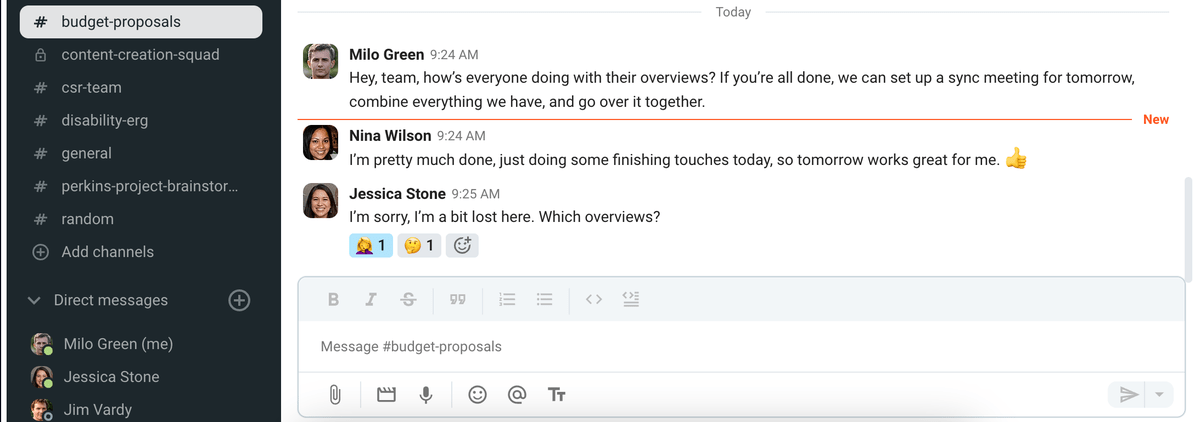
💡 Pumble Pro Tip
Taking ownership of your own work is a trait of a great employee. However, not everyone is prepared to do that. What’s more, remote workers struggle with this aspect of work immensely due to the lack of external control. To find out more about that as well as how to improve accountability in your workers, check out this article:
Example #2: Blending into the background
In almost every group, there’s that one person who is usually completely silent. They don’t contribute ideas, offer solutions, or take on tasks.
Sometimes, these social loafers are afraid their opinions won’t be valued or will lead to miscommunication in the team, so they hold their tongues.
Other times, they don’t feel their work environment is a safe space, which affects their mental health as well as participation, as they are reluctant to share their ideas.
💡 Pumble Pro Tip
If you notice that your employees are afraid to contribute, then that might be a sign they aren’t feeling safe in the workplace. To find out why that’s important (and how to remedy it), take a look at the article below:
Example #3: Freeriding
While the loafer who blends in the background is usually scared to self-advocate at work, a free rider sits back and waits until the task is done so they can reap the benefits of other people’s labor.
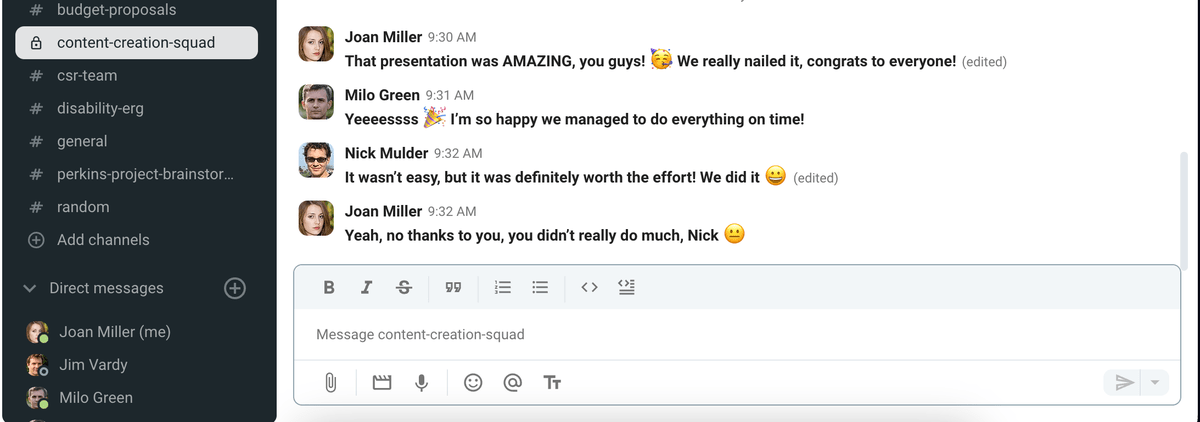
💡 Pumble Pro Tip
Sometimes we end up doing more than our fair share of work because of social loafers. To learn how to avoid that, you must first learn how to say no and decline tasks that aren’t yours. The following two articles will give you excellent pointers on both:
Example #4: “Doing as you do”
Social loafing is often a problem in a driven team because the loafer stands out among their engaged and proactive teammates. But, what happens when everyone lacks motivation?
A person who’s motivated and full of energy and ideas can quickly turn into a social loafer who only does the bare minimum because their teammates do the same.
This happens because the person in question doesn’t see the effects of their own work and the collective goal loses all value.
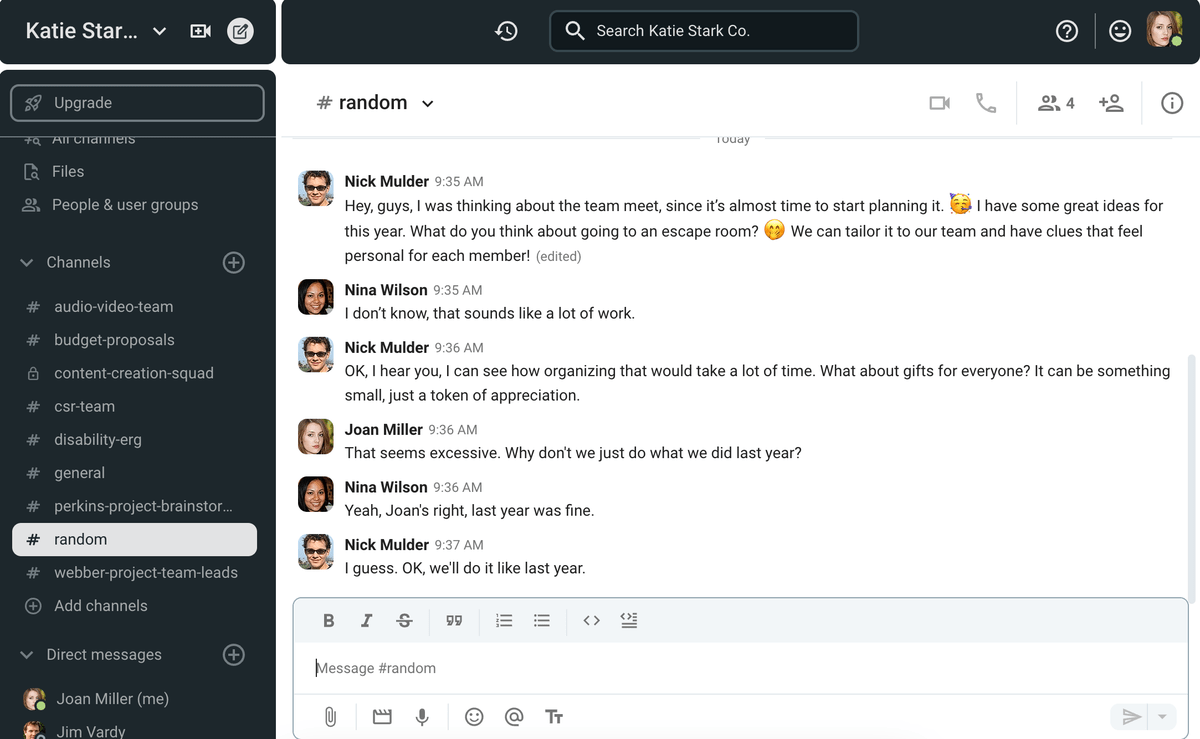
💡 Pumble Pro Tip
Keeping your employees engaged and motivated will definitely help you in your battle against social loafing. To find out more about boosting employee engagement, take a look at this article:
Example #5: Bystanding
The bystander effect is a phenomenon where people in groups don’t offer help to those in immediate need because they think someone else will surely do it. A similar thing happens in the workplace and is a type of social loafing — people tend to not participate because they feel they don’t have to, as someone else will do it.
You’ve probably been to many meetings where someone in a leading meeting role asks a question or asks for volunteers, and no one raises their hand (including you). That’s the bystander effect — you all assume someone else will do it.
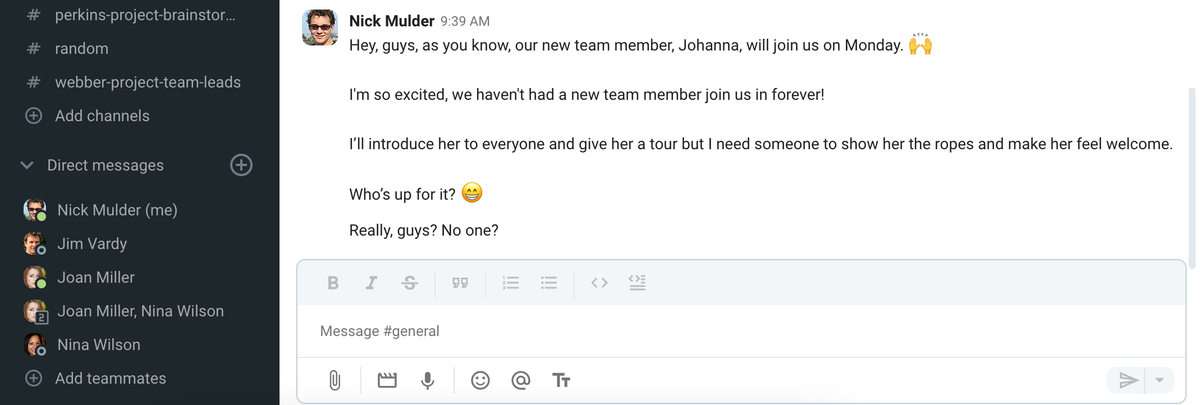
💡 Pumble Pro Tip
Active communication — which is pretty much the opposite of bystanding — is vital in the workplace. Being proactive improves collaboration and thus affects team performance. To learn more about the ins and outs of active communication, read the following article:
What causes social loafing?
As mentioned, quite a few social scientists tried to determine why social loafing occurs. The social loafing theoretical research mostly focuses on two distinct causes:
- Group design and organization and
- Individual differences between group members.
As a complex phenomenon, social loafing is caused by several factors that fall into the two categories mentioned above, most notably:
- Group size,
- Lack of clarity,
- Lack of accountability,
- Diffusion of responsibility,
- Perception of inequity,
- Reduced motivation,
- Expectations of other people’s performance, and
- Cultural differences.
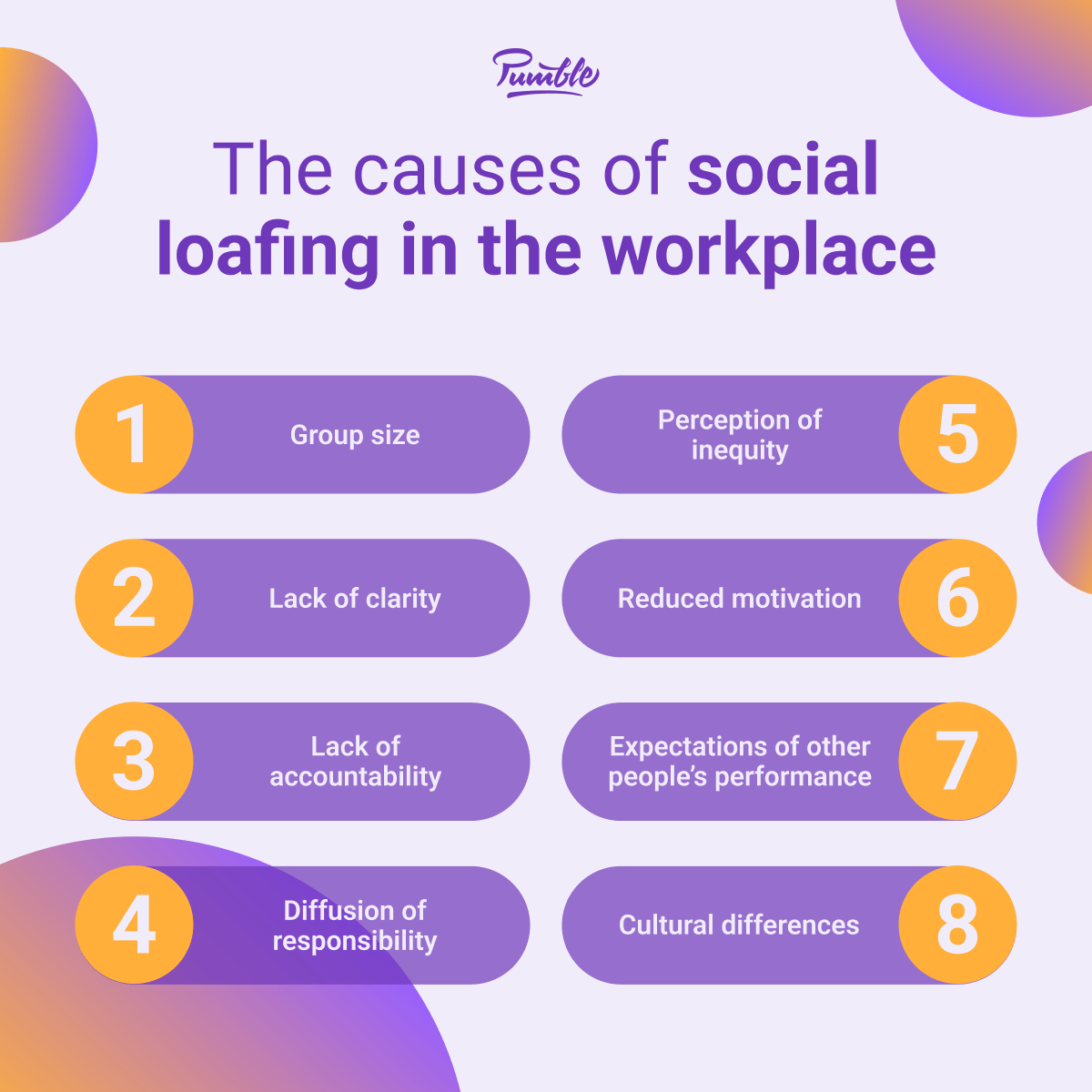
Let’s take a deeper look into each of these factors to answer the question — when does social loafing occur?
Cause #1: Group size
When you have a big task to do or you need some innovative solutions to fix a problem, your first instinct might be to gather a big group of people and have them work on it together, right?
Although that’s a wise strategy, given that a bigger group is able to generate more ideas, perspective, and creativity, having a big group work together on a task can also backfire — mostly due to social loafing.
Why?
Well, the bigger the group, the more anonymous team members become. This affects group communication, which determines the group dynamic.
No matter the type of team, the size of it will always affect the amount of effort every member puts in because it diminishes the chances of the effort being individually recognized by the upper management.
Another issue that large groups have is that things often slide through the cracks. Coordinating individual efforts and maintaining effective communication in the team becomes increasingly difficult with each team member who joins.
Cause #2: Lack of clarity
Although it might seem like social loafing only happens due to the insolence of workers, sometimes it’s actually the management’s fault. A lack of clear directions or lack of clarity when it comes to tasks and roles may lead to people feeling confused about what to do and, thus, less motivated to do it.
According to an experimental study done at Ohio State University that included 1,699 employees, workers who have clear roles and responsibilities report higher levels of work satisfaction, which, in turn, leads to lower rates of workplace turnover.
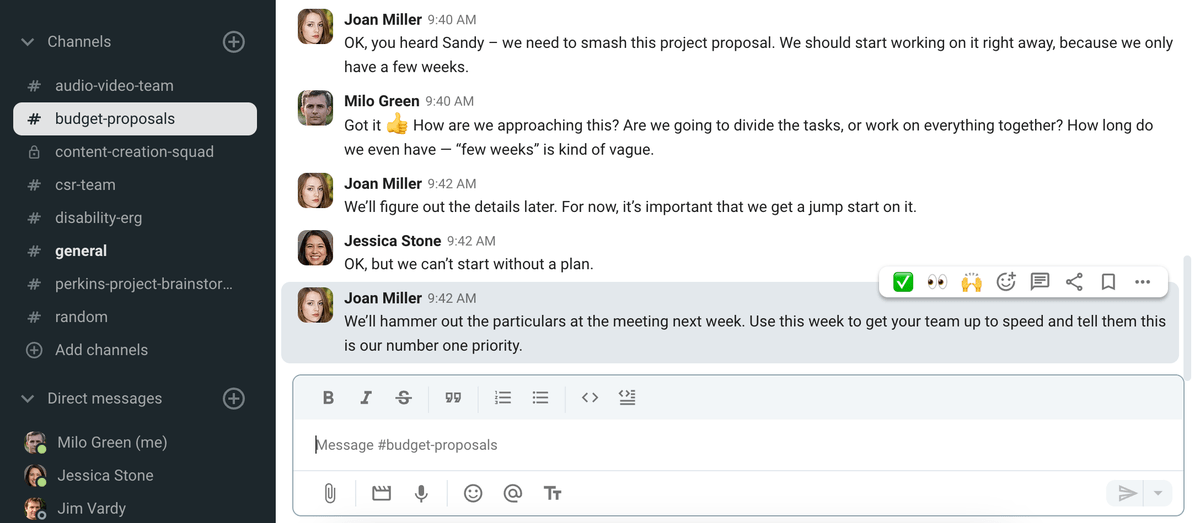
Furthermore, knowing what you need to do as well as when you need to do it is a sign of a positive work environment, which can increase employee engagement.
We spoke about this to Sneha Mandala, a TEDx & Keynote Speaker and Professional Credentialed Coach and Advisor. She stated that social loafing is one of the direct consequences of disengagement.

“Social loafing often creeps into the workplace due to various factors. One primary reason is the absence of the conditions needed to create a state of intense engagement at work. When individuals aren’t fully immersed in their tasks, they become more susceptible to feeling bored or apathetic.”
Cause #3: Lack of accountability
As mentioned, social loafing happens in groups where the end result is judged as a group effort. Thus, some team members feel they might not have to put in as much effort because it won’t be judged individually.
Suppose a person thinks they won’t be held accountable for their actions. In that case, they might feel it’s perfectly fine not to contribute as much as they would if they were working individually (which would make them solely responsible for the task outcome).
Lack of accountability can be a sign of low engagement in the workplace but, as testified by our expert, Paola Accettola, it can also happen due to a lack of acknowledgement or compensation.

“The nature of workplaces depends on compensating people for their contributions. This incentive is reduced in the group setting by shared accountability and shared recognition.”
Cause #4: Diffusion of responsibility
Lack of accountability goes hand-in-hand with diffusion of responsibility.
In larger teams, people contribute less because they don’t feel personally responsible for the outcome. They aren’t as motivated to achieve the common goal precisely because it’s common (and not individual).
One of our contributors, Keca Ward, an HR professional with over 20 years of experience, states that diffusion of responsibility is the most common cause of social loafing.

“One key factor is the diffusion of responsibility, where individuals feel less accountable for their efforts in a group, assuming others will pick up the slack.”
Although shared responsibility is a key aspect of good team collaboration, it’s vital that people also take ownership of their own, individual contributions — otherwise, they’ll slack off and expect the rest of the team to do their part as well.
Cause #5: Perception of inequity
Social loafing is sometimes a direct consequence of real or perceived inequity.
If a team member feels their contributions, opinions, or efforts aren’t as valuable as others, they might start to loaf. They might feel overshadowed or even unneeded, which will diminish their motivation and engagement.
That’s how we get employees who only do the bare minimum, which, according to our expert Sneha Mandala, is the worst thing for the company’s bottom line.

“[Social loafing] disrupts the delicate equilibrium necessary for sustainable peak performance. When employees aren’t inspired and energized at work, they aren’t in their flow, driven by their internal motivation, and operating authentically, productivity suffers. The consequences ripple across teams and organizations, impacting not only individual performance but also the collective outcome of projects and tasks. As I like to say – no company has ever done anything innovative, pioneering, or award-worthy with employees doing the bare minimum.”
This often happens in cross-functional teams where there’s a clear imbalance between team members’ skills. Furthermore, social loafing caused by a perception of inequity also happens in remote teams. It’s difficult to feel included and connected in remote teams, which may lower the rates of some people’s engagement.
Cause #6: Reduced motivation
Loss or lack of motivation was highlighted as one of the main contributors to social loafing in the first study that explored social loafing, done by Ringelmann.
Since then, other researchers also noticed that motivation plays a big part in social loafing.
Working in a group diminishes the individual’s drive and motivation to perform a task, which leads to a lack of effort, according to Jackson and William. They stipulated that the sheer presence of other people makes individuals less driven to achieve a specific goal.
Cause #7: Expectations of other people’s performance
One of the less prominent but equally important factors that contribute to social loafing is expectations of your coworkers’ efforts. If you think that other people will slack off, then it’s more likely that you won’t put in as much effort as you would.
This phenomenon, also known as “effort matching” manifests in 2 different ways:
- Individuals reduce effort because they feel their coworkers will do the same, and
- Individuals reduce effort because they believe their coworkers have sufficient abilities to achieve the group goals without their input.
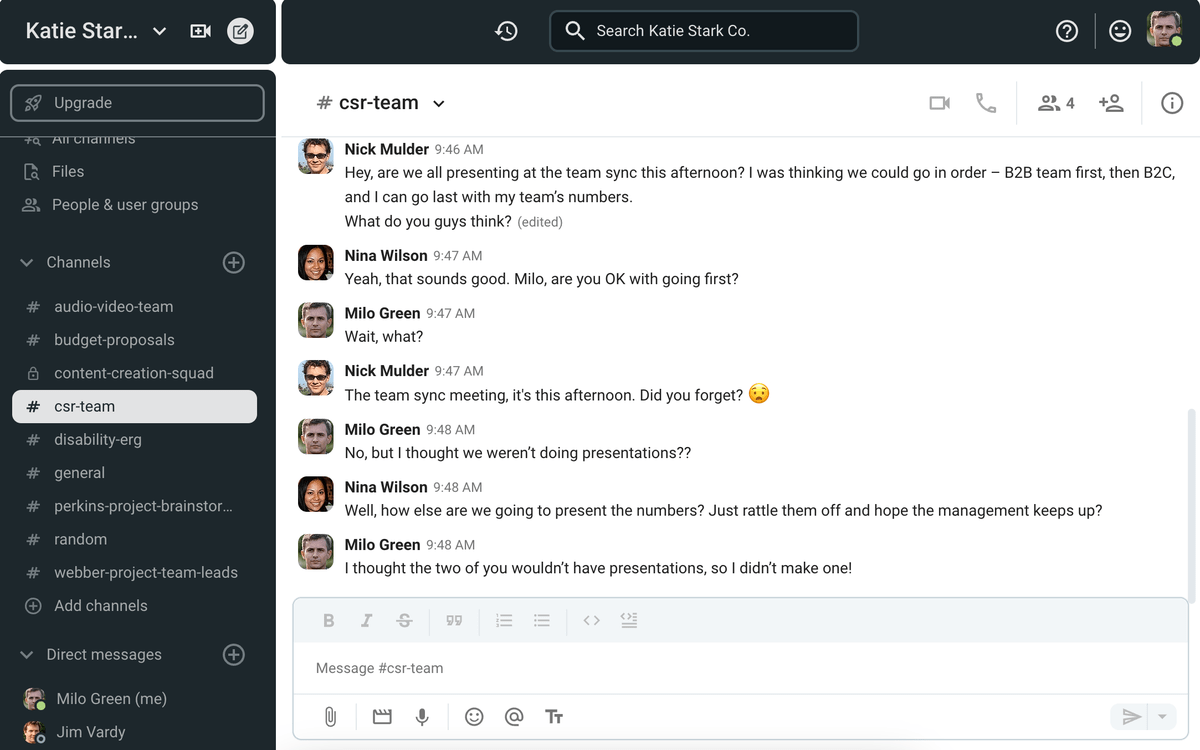
Cause #8: Cultural differences
The cultural differences in communication influence the way we collaborate with others. What’s more, these differences can also be the underlying cause of perceived social loafing.
Cultural differences may prove to be significant communication barriers that influence not only collaboration but also individual performance. Some cultures are more group or social-oriented, while others value individual effort more than group work. This might contribute to the overall volume of social loafing in the workplace.
💡 Pumble Pro Tip
Working in multicultural environments can sometimes be challenging, but finding your way in a multicultural team is a necessity dictated by the global workforce. To learn how to overcome the challenges and cultural barriers, read the article below:
What is the outcome of social loafing in the workplace?
So far, we mentioned quite a few consequences that we can observe in the workplace due to social loafing, but now it’s time to go into further detail.
According to our expert, Paola Accettola, all consequences of social loafing fall into one of 2 categories.

“The negative effects of social loafing are twofold:
- Reduced productivity — social loafing almost guarantees the collective is not using its full potential to complete the task and make a meaningful impact.
- Individual impacts for each team member — those who are left completing most of the task on behalf of the group can either feel burnout or have a false sense of entitlement, depending on the culture. While those who ‘free ride’ are less likely to feel fulfilled in their work and may even feel inferior.”
The decline in productivity is the most prominent consequence of social loafing, especially if your team isn’t dealing with just one social loafer but more of them. However, other, less prominent or measurable outcomes, are equally important.
Individual impacts that Accettola mentioned are as serious as a decrease in productivity. Social loafing can lead to resentment among team members and conflicts in the team, ultimately leading to low team morale.
Keca Ward agrees and adds that social loafing can also have serious consequences for the overall business.

“Social loafing can lead to negative effects in the workplace, including reduced productivity, as team members contribute less effort when they believe their actions go unnoticed. It can also strain relationships among team members when some feel they are carrying a disproportionate workload. Moreover, the overall quality of work may suffer, impacting the organization’s success and potentially harming its reputation.”
💡 Pumble Pro Tip
Mitigating team conflict is a serious and often difficult task. If you need some help on that front, learning a few conflict resolution phrases and methods will surely come in handy. Check out the following article:
How to reduce social loafing in the workplace
As stated, social loafing can happen in any team. Overall, social loafing happens due to internal factors of specific individuals who loaf (which means it can happen even in teams run by good managers) or due to external, organizational factors (which means even great workers can become social loafers).
Because of its prevalence, people are often left wondering how to prevent social loafing in the workplace.
In the following chapters, we will answer that question from 2 perspectives – the managers’ and employees’.
How you can reduce social loafing if you’re a manager
A manager can do quite a bit to reduce the chances of having a social loafer on their team.
If we go back to the root causes of social loafing, the answer to the question “How to avoid social loafing in teams” is by:
- Establishing small groups,
- Clearly setting expectations and tasks,
- Evaluating individual performance (as well as group one),
- Centralizing communication,
- Making tasks cooperative, and
- Adopting the right leadership style.
Let’s take a deeper look at each of these strategies to see what they entail.
Tip #1: Establish small groups
If you have a large team working under you, it might be a good idea to divide it into smaller sub-groups.
As mentioned, large groups are the perfect social loafer breeding ground, as they allow members to be anonymous, thus reducing their perceived accountability.
Furthermore, with fewer members in the group, each member is more likely to see the impact their efforts have on the outcome. Smaller groups also facilitate easier team communication and allow all members to avoid information overload, thus making both communication and collaboration more efficient.
Tip #2: Set clear expectations, tasks, and organizational rules
Clarity or, better said, lack of clarity is a great contributor to social loafing. That’s why it’s vital that you clearly set:
- Expectations,
- Tasks,
- Roles, and
- Organizational rules.
Properly communicating expectations is of the utmost importance because it makes the employee aware of their own duties and responsibilities and more likely to take ownership of them.
You can also help to clear things up by assigning individual tasks. That way, each member of the team will have something they are responsible for, for which they will be judged, and, ultimately, recognized.
Let’s take a look at one of the previous examples to see how maintaining clarity in a team could have made things different.
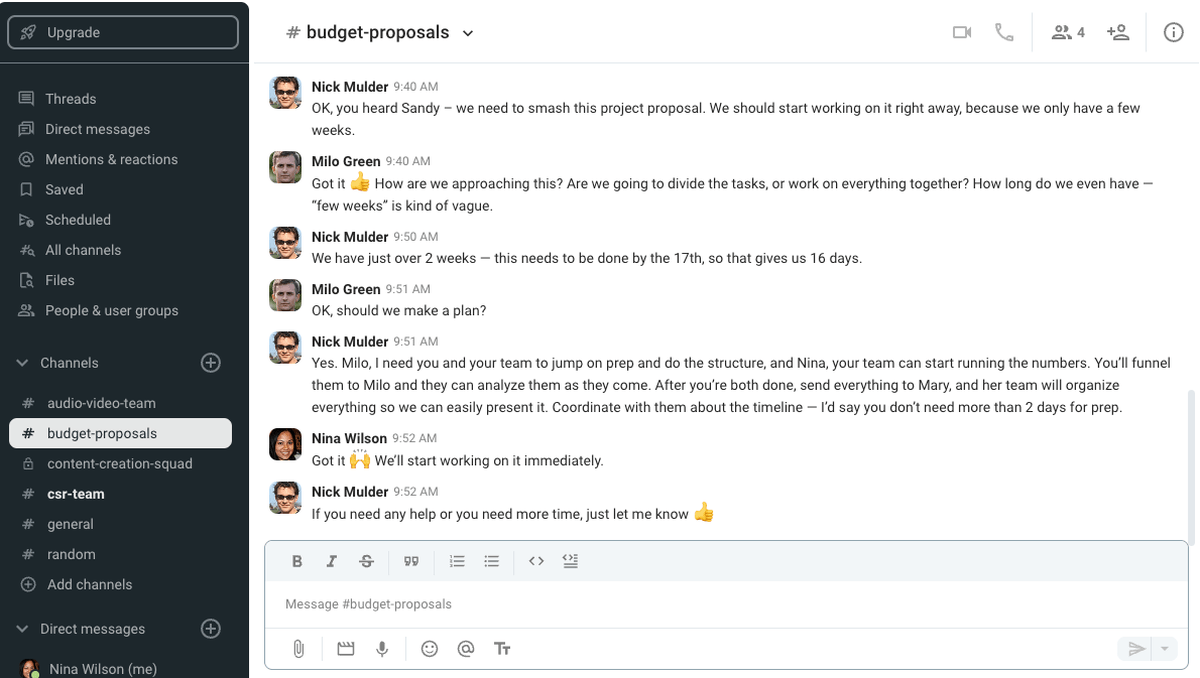
Tip #3: Evaluate both group and individual performance
Because being judged for the group outcome leads to some people slacking off, introducing both group and individual performance reviews is a good way to nip social loafing in the bud.
Our expert, Keca Ward agrees with this and highlights that making employees take responsibility for their actions is the best method of fighting social loafing.

“[Aside from clarifying roles and expectations], managers can reduce social loafing by fostering a sense of individual accountability within teams and setting measurable performance goals for each team member.”
She continues by saying that these methods work best when combined with acknowledgment.

“Additionally, providing regular feedback and recognition for individual contributions can motivate employees to put in their best effort, reducing the likelihood of social loafing.”
Sometimes people loaf not because they see they can cut corners but because they feel their contributions won’t be properly recognized. So, set some time aside to praise individuals for their achievements in group tasks.

Tip #4: Centralize communication and collaboration in one tool
Lack of communication or ineffective communication can quickly lead to social loafing. Loafers tend to slip through the cracks, so, if you, as a manager, don’t have a handle on team communication, you’ll most likely miss that an employee isn’t putting their best foot forward.
The best way to stay in control is to streamline communication and collaboration in one tool.
An internal communication software like Pumble can help you keep track of the individual tasks you’ve assigned to all the members of your team, as well as keep in touch with all of them.
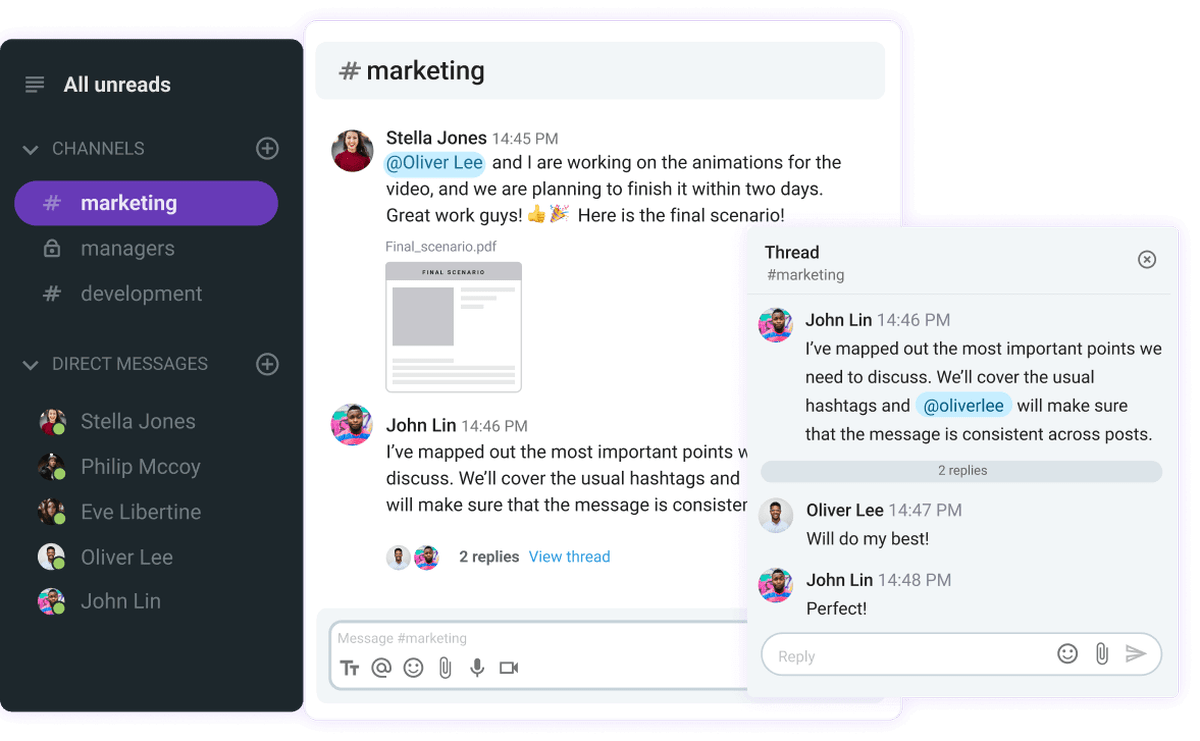
Constant communication provides extra clarity and improves psychological safety in the workplace — when your employees know they can reach out to you for help, they are more likely to be engaged. At the same time, they are also more likely to take ownership of what they do.
Tip #5: Make tasks cooperative
A lack of motivation is often a big problem for social loafers. You might be able to get a handle on that and boost people’s motivation if you make tasks more cooperative. Collaboration entails people working to achieve a common goal — however, “working” doesn’t have to be done together.
Cooperation, on the other hand, makes people work together. They work cooperatively and support each other with the goal of helping everyone reach their individual milestones.
Motivating employees to achieve the company goals is of the utmost importance and, according to Paola Accettola, there’s another way to achieve that.

“Another thing managers have control over is the incentive or reward for completing the task. By framing a group task as something that should have a higher output, given the higher input of labor, managers can assign a larger incentive to further encourage individuals to contribute to the best of their ability to push the task forward.”
Tip #6: Adopt the right leadership style
Finally, managers can help their employees refrain from social loafing by adopting the right type of leadership style.
There are some leadership styles, such as transformational leadership, for example, that have been proven to lower the chances of social loafing.
A good leader can not only inspire their employees but also create a work environment that’s conducive to productive and effective group work — something that our contributor, Sneha Mandala, marks as crucial for reducing social loafing.

“Managers can effectively reduce social loafing by fostering an environment that promotes a flow state for employees. This means employees are immersed in their work in the sweet spot between boredom and anxiety. This is when their work feels slightly challenging in a fun and positive manner. This involves aligning tasks with employee strengths and passions, encouraging autonomy, competence, and a clear connection between roles and the organization’s purpose. By creating such an environment, managers can actively reduce the incidence of social loafing, as employees are more likely to find themselves in the coveted flow state.”
How you can reduce social loafing if you’re an employee
Of course, because social loafing is often caused by internal factors, employees themselves can also do something to reduce the chances of loafing in the workplace.
Overall, employees can:
- Maintain constant communication,
- Increase their engagement and motivation,
- Take ownership of their work, and
- Set personal goals.
Tip #1: Maintain constant communication
Just like managers need to keep lines of communication open, employees need to do their part as well. After all, improving team communication isn’t just the manager’s job.
Our contributor, Paola Accettola, highlights just how important communication is.

“By openly communicating about expectations of contributions, employees can help reduce social loafing. Encouraging everyone to share ideas and valuing each contribution to the same degree is a good starting point. Of course, group settings invite disagreement, but overall, they should be an environment for deliberation of different perspectives that help create a product that would not have been possible by the work of any one individual alone.”
So, communicate what you’re doing for the tasks you’re assigned to and ensure all your teammates are aware of your efforts.
To make things easier, you can use dedicated channels to help you organize your efforts in the communication and collaboration tool the manager used to streamline communication.
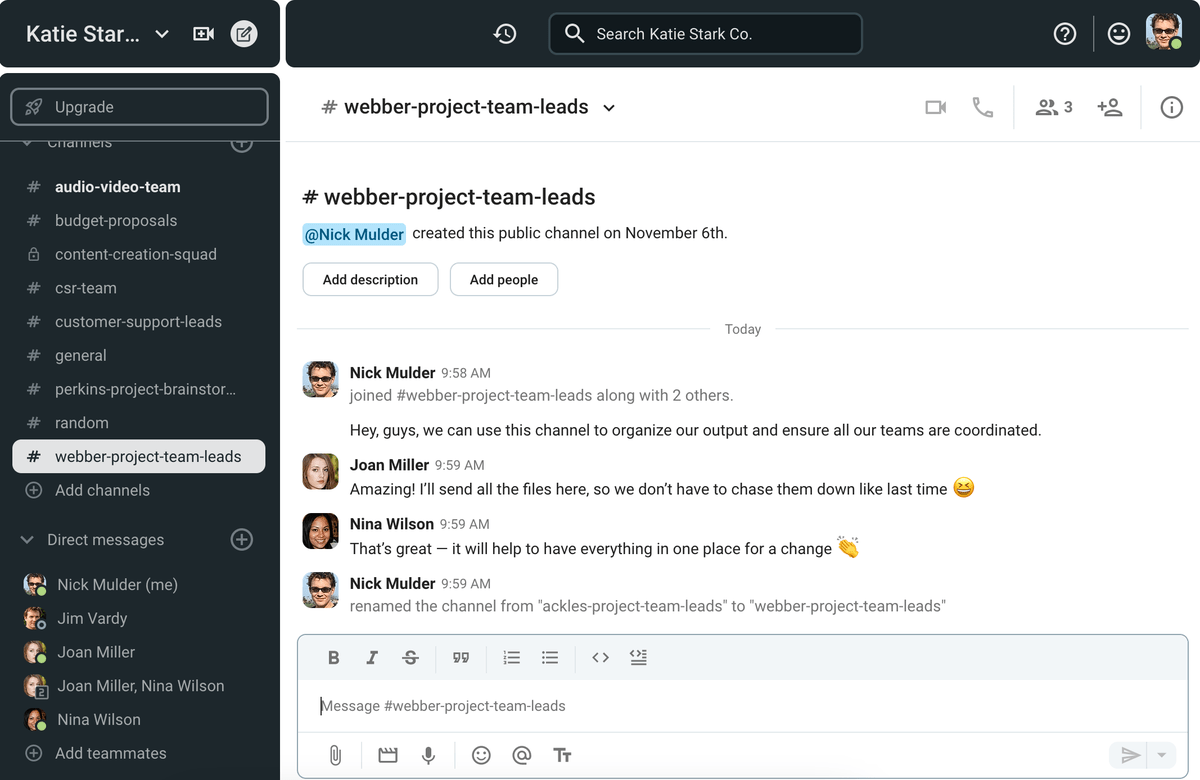
If you have the means, you can also practice some face-to-face and real-time communication. Although remote and hybrid teams tend to handle everything remotely and via asynchronous communication, it’s easier to bond or brainstorm with people in person.
Tip #2: Increase your engagement and motivation
Engagement stems from motivation, but both are vital when it comes to avoiding social loafing in the workplace.
Although there’s quite a bit that management can do to increase engagement, employees need to ensure they are dedicated to the tasks at hand.
The best way to do that is by getting invested and involved. Caring about the outcome of a task will help you maintain steady levels of motivation, and motivation is vital, according to our contributor, Sneha Mandala.

“Individual employees also play a crucial role in mitigating social loafing. By gaining a profound understanding of their intrinsic motivations and authentic selves, employees can proactively express the same with managers and contribute to a more engaging and productive work environment for themselves.”
Mandala continued by saying that increased motivation can also help employees feel more like their efforts and contributions are necessary, ultimately giving them a sense of purpose and ownership.

“[Overcoming social loafing] is about taking ownership of their work, striving to be in their flow state, and ensuring that social loafing doesn’t disrupt their pursuit of sustainable peak performance. When employees are deeply motivated and aligned with their authentic selves, the risks of social loafing diminish significantly.”
Tip #3: Set personal goals
Finally, you can reduce your own desire for social loafing by setting personal goals. If the common, collective goal isn’t important enough to you or doesn’t hold a motivational value for you, you can always set personal goals that will keep you going and stop you from offloading your tasks and responsibilities onto your coworkers.
Social loafing: You CAN have a social loafing-free team
Although a complex phenomenon, social loafing can be broken down into basic elements, which helps us understand not only what causes it but also how we can prevent it in the workplace.
Social loafing might seem like a direct consequence of laziness, but it’s actually caused by:
- Group size,
- Lack of clarity,
- Lack of accountability,
- Diffusion of responsibility,
- Perception of inequity,
- Reduced motivation, or
- Expectations of other people’s performance.
Once you figure out the cause of social loafing, you can easily prevent or at least diminish it by:
- Breaking up into smaller brainstorming groups,
- Clearly defining everyone’s role and tasks,
- Communicating with one another,
- Taking accountability and ownership for your actions,
- Not presuming other people’s levels of effort,
- Maintaining steady motivation, and
- Being proactive.
✉️ What are your ways of overcoming social loafing in the workplace? Do you have some extra tips for managers or employees on how they can reduce loafing in their teams?
Share your experience and tips at blogfeedback@pumble.com and we may include your answers in this or future posts. And, if you found this blog useful, share it with someone you think would also benefit from it.





